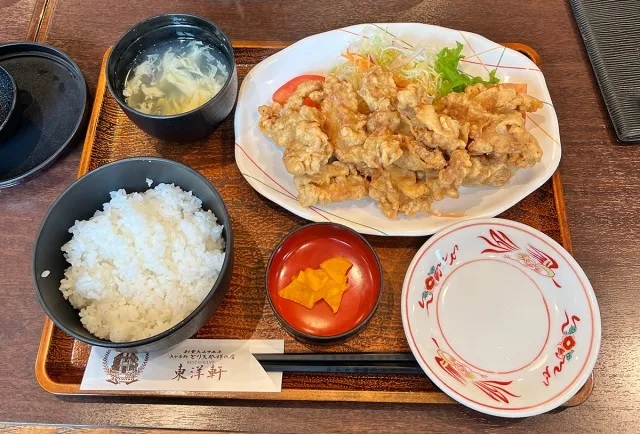Japan spending survey shows one region really likes to drink

Beer? Sake? One part of Japan has a strong fondness for both, as well as a few other alcoholic beverages.
Japan’s Ministry of Finance conducts an annual survey on the spending habits of Japanese households, sifting through both total expenditures by city and what exactly those households spent their money on. Some of the most interesting societal snapshots the statistics provide are the ones on food and beverage spending, with this year’s results showing that one region in particular appears to be spending a lot on alcohol.
First, when looking at total household expenditures, you might be surprised to learn that Tokyo didn’t finish at the top of the list. The biggest per-household spender was Saitama City, the most populous town in Saitama Prefecture, Tokyo’s neighbor to the north, with average expenditures of 4,129,107 yen (US$28,090). Tokyo’s wards (which make up the central part of the city and its closest suburbs) averaged out at 4,095,843 yen per household, followed by Tsu, Mie Prefecture, at 3,991,958 yen.
But just because those three cities spent the most doesn’t mean they spent the most on each and every type of item. Several other municipalities claimed the top per-household expenditures for specific types of food and drink:
● Akita City: Most money spent per household on broccoli, sake
● Aomori City: Bean sprouts, beer, cup ramen and other noodles, yakitori
● Hamamatsu (Shizuoka Prefecture): rice, mikan (mandarin oranges)
● Kagoshima City: Shochu
● Kanazawa (Ishikawa Prefecture): Curry roux
● Kita Kyushu City (Fukuoka Prefecture): Tarako (cod roe)
● Kobe (Hyogo Prefecture): Bread
● Kumamoto City: Watermelon
● Nagano City: Apples
● Nara City: Chocolate
● Oita City: Chicken
● Saitama City: Cake
● Sendai (Miyagi Prefecture): Chu-hi cocktails
● Shizuoka City: Green tea, tuna
● Tokyo Wards: Black tea, pasta, pork
● Tottori City: Crab
● Wakayama City: Beef
● Yamagata City: Whisky
Several of these chart-topping cities match up with regions of Japan that are famous for the corresponding items. Kumamoto, Nagano, and Shizuoka have large numbers of watermelon, apple, and mikan farms, respectively, and access to especially fresh fruit, with a wide range of sub-varieties for each, naturally translates into more spending on those foods. Toriten, chicken tempura, is the representative dish of Oita, so it makes sense that its residents buy a lot of chicken. Same goes for black tea and Western-style pasta in Tokyo, Japan’s most cosmopolitan, internationalized city.
▼ We still have fond memories of this toriten lunch set we ate in Oita.

There’s something similar with Kagoshima and shochu, since the drink came to Japan through contact with other Asian nations, which Kagoshima had more of back in the olden days than most of the rest of Japan. But Aomori doesn’t have any significantly strong cultural connection to beer production, nor does Sendai to the chu-hi, a cocktail (often canned and purchased from convenience stores) made with shochu, soda water, and fruit flavorings. And while Akita does have a lot of sake breweries, its reputation as a producer of Japan’s indigenous spirit still lags behind that of Niigata Prefecture.
So what’s something that Akita, Aomori, Sendai, and whisky-loving Yamagata too, have in common? They’re all located in Tohoku, the northeastern end of Japan’s main island of Honshu. Tohoku is known for its natural beauty, less densely populated cities, relaxed pace of life, and, last but certainly not least, very long, very cold winters. During those bone-chilling winter months, it’s not hard to imagine that heading to the nearest convenience store or liquor shop and stocking up on liquid entertainment with which to pass the time back at home starts to sound like an increasingly attractive option than venturing any farther into the icy conditions.
▼ “Hmm…forecast says it’s gonna be cold for the next 90 days…”

That would also explain why the most enthusiastic wine buyers were all the way down in Yokohama, well south of Tohoku. Yokohama is Japan’s second-largest city in terms of population and its coastal location means it enjoys a relatively mild climate by Japanese standards, meaning a relatively less isolation throughout the year. Wine remains more of a social-gathering drink in Japan, something to bring to a party or to open when having friends over, than something drunk by oneself at home on a daily basis.
However, it remains a mystery why Nara, one of Japan’s most traditionally minded cities, spent more on chocolate than anywhere else on a per-household basis. Rest assured that we intend to investigate by eating as many chocolate desserts as we can the next time we’re in the city.
Source: NHK News Web via Otakomu
Top image: Pakutaso
Insert images: SoraNews24, Pakutaso
● Want to hear about SoraNews24’s latest articles as soon as they’re published? Follow us on Facebook and Twitter!
Credit:

0 comments:
Post a Comment